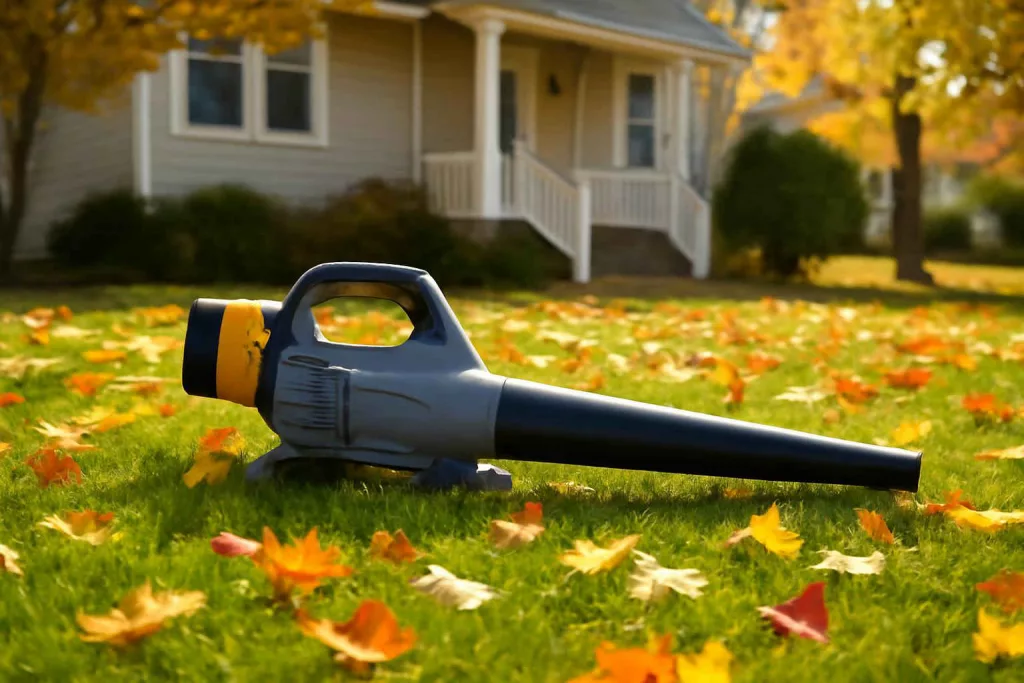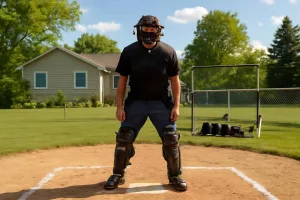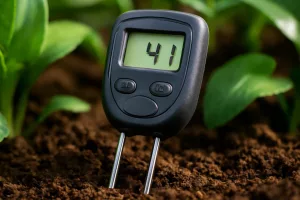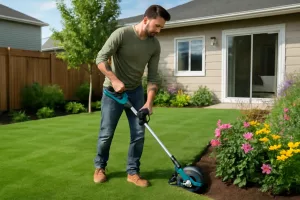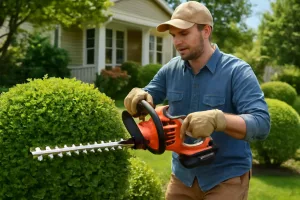Yard maintenance moves faster when you choose a cordless electric leaf blower over traditional gas models. These battery-powered blowers eliminate the hassle of mixing fuel, reduce noise levels, and deliver instant startup with just a button press. Whether you’re clearing grass clippings, removing fallen leaves, or brushing away debris from sidewalks and patios, a quality cordless leaf blower offers portability and power in one package. In this guide, we’ll dive into the advantages, key performance factors, and top picks to help you find the right model for your yard work needs, backed by honest pros, cons, and detailed buying criteria.
Why Choose a Cordless Electric Leaf Blower?
Advantages Over Gas-Powered Models
Cordless electric leaf blowers have surged in popularity because they combine convenience with low maintenance. Unlike gas blowers, there’s no need to mix fuel or worry about engine tune-ups. Users save time on upkeep and avoid the expense of gasoline and oil. Electric models start instantly with a push-button ignition, eliminating the frustrating pull-starts that can plague gas blowers, especially in colder weather. Battery power also means significantly lower emissions and quieter operation, making them ideal for neighborhoods with noise ordinances or early-morning yard work.
Many cordless blowers offer a range of voltage options—commonly 40V, 56V, or even 80V—allowing users to match performance to their yard size and debris density. High-voltage systems provide performance comparable to smaller gas blowers but with zero direct emissions. The absence of hoses or cords also means you can maneuver freely around trees, flower beds, and tight corners without the risk of tripping over power cables.
If you already own other outdoor tools like battery-powered trimmers or lawn edgers, you can often swap batteries between devices. Integrating your blower with an existing battery ecosystem saves money on extra batteries and chargers. For instance, pairing your blower with battery-powered lawn edgers and a cordless electric hedge trimmer from the same brand simplifies recharging and reduces overall gear costs.
Key Performance Metrics: CFM, MPH, and Noise Levels
When evaluating cordless leaf blowers, two numbers often headline the specifications: cubic feet per minute (CFM) and miles per hour (MPH). CFM measures the volume of air flow, indicating how much debris the blower can move over time. A higher CFM rating is essential when you need to clear large piles of wet leaves or heavy grass clippings. MPH reflects wind speed, which provides the force necessary to dislodge stuck debris. Many cordless leaf blowers fall in the range of 350 to 800 CFM and 100 to 200 MPH, with higher levels better suited for heavier cleanup.
Noise is another critical factor. Gas blowers can exceed 90 decibels, while many electric models operate between 60 and 75 decibels. Electric units are typically quieter, reducing the risk of neighbor complaints and hearing damage. Always check the manufacturer’s noise rating and consider investing in hearing protection for extended use. Some premium models also feature a variable speed trigger or multiple speed settings, allowing you to dial back power for quiet tasks like clearing flower beds.
Battery life directly influences runtime. Look for models whose batteries can deliver at least 20 to 30 minutes of continuous high-speed operation. Some blowers feature dual-battery ports, which allow you to boost runtime by using two batteries simultaneously or swapping fresh cells mid-job. State-of-charge indicators on modern battery packs help you monitor remaining power and plan charging accordingly.
How to Choose the Best Cordless Electric Leaf Blower
Power and Performance Requirements
Choosing the right power level starts by assessing the size of your yard and the type of debris you encounter. For small yards under 1,000 square feet, a blower offering 350–450 CFM and 100–130 MPH is usually sufficient. These compact models are lighter and easier to handle. If you manage a larger landscape or face stubborn wet leaves, aim for at least 500 CFM and 150 MPH. Blowers with brushless motors deliver higher efficiency, longer runtime, and extended motor life compared to brushed motors.
Variable speed control is a feature to consider if versatility is important. Lower speeds work well on delicate surfaces like patios and flower beds, while high speeds tackle heavy debris on driveways and lawns. Some models include turbo or boost modes that temporarily raise both CFM and MPH for peak performance during the toughest cleanup tasks.
Finally, factor in any additional attachments. Many blowers offer nozzle extensions or vacuum/mulcher conversion kits, which crush leaves down to 1/10th of their original volume for easier disposal. These hybrid options expand the tool’s functionality but can add weight and require extra storage space.
Battery Compatibility and Runtime
Battery selection is just as important as blower performance. Common voltages include 40V, 56V, and 80V, with higher-voltage batteries able to deliver more power and longer runtime. If you already use a specific voltage ecosystem for other yard tools, staying within that system simplifies charging and reduces the need for additional batteries and chargers.
Runtime varies widely based on CFM and speed setting. A 2.0 Ah battery might provide 20 minutes of runtime at mid power on a 40V blower, whereas a 5.0 Ah cell could deliver 40–45 minutes. Dual port blowers accept two batteries simultaneously, effectively doubling runtime without swapping packs. Look for lithium-ion batteries with built-in management systems that protect against over-discharge, over-current, and overheating, extending overall battery life.
Fast chargers can bring most batteries to 80% in under 30 minutes, minimizing downtime. If you have an extensive yard, consider investing in a backup battery and rapid charger so you can quickly swap out packs and keep working uninterrupted.
Ergonomics and Durability
Comfort and build quality can determine how long you can operate the blower before fatigue sets in. Lightweight models around 6–8 pounds are ideal for extended periods, while heavier systems above 10 pounds often pair with backpack mounts to distribute weight evenly across your shoulders and hips. Handle design and balance play a crucial role—look for padded grips and balanced center of gravity to minimize wrist strain.
Durability hinges on motor quality and housing materials. Polycarbonate shells resist impact and UV degradation, while sealed motors and battery compartments prevent dust and moisture intrusion. If you work in damp conditions or plan to blow wet leaves, ensure the blower is rated for light moisture exposure and has effective seals.
Maintenance features like tool-free access to air intake vents make cleaning quicker. Removable and washable filters prevent overheating by ensuring proper airflow. For tool storage, consider pairing your blower with garage organization cabinets or magnetic parts trays for blades and hardware, keeping everything in place and ready for your next outdoor project.
Top 5 Cordless Electric Leaf Blowers: Detailed Reviews
1. DEWALT DCBL720P1
The DEWALT DCBL720P1 features a brushless motor delivering 125 MPH wind speed and up to 500 CFM airflow. Its compact frame weighs just 7.2 pounds, making it easy to maneuver. The variable speed trigger and lock-off button offer precise control and safety. With a 20V MAX* battery system, it’s compatible with a wide range of DEWALT tools. Pros include excellent balance, solid runtime of up to 30 minutes, and tool-free tube attachment. Cons are a relatively high price and limited high-speed runtime. Find it on Amazon by searching “DEWALT DCBL720P1” for a reliable, lightweight option.
2. EGO Power+ LB5304
EGO’s LB5304 offers a high-performance brushless motor that achieves 530 CFM at 120 MPH. Its 56V ARC Lithium™ battery provides up to 40 minutes of runtime on a single charge. The blower weighs 8.5 pounds including the battery and offers three speed settings plus a boost mode. Its rapid charger refills the battery to 80% in 30 minutes. Pros include excellent airflow, robust battery life, and a comfortable soft-grip handle. The main drawback is its weight, which may tire users during prolonged jobs.
3. Greenworks 40V Dual Port Backpack Blower
This model shines for heavy-duty applications, offering a backpack design that distributes weight across your back. The dual-port design uses two 40V batteries to deliver up to 580 CFM and 145 MPH. Run time can exceed 45 minutes on low-speed settings. At 12 pounds (excluding batteries), it’s heavier but manageable with the adjustable shoulder straps. Pros include extended runtime, high airflow, and reduced arm fatigue. Cons are bulkiness and a steeper learning curve for proper strap adjustment.
4. Makita XBU02Z 18V LXT
Makita’s XBU02Z uses two 18V LXT batteries to reach 450 CFM and 122 MPH. Its brushless motor enhances efficiency and provides up to 20 minutes of runtime on high. At 9.4 pounds, it remains portable while offering three speed settings. Pros include excellent build quality, compatibility with Makita’s expansive LXT battery platform, and good ergonomics. A con is the need for two batteries, which may require separate purchases if you only own one.
5. BLACK+DECKER LSW36
The BLACK+DECKER LSW36 is an affordable 36V option delivering 400 CFM and 125 MPH. Weighing just 7 pounds, it’s easy to use for quick yard tasks. Single-speed operation simplifies controls, and a 2.0 Ah battery provides about 25 minutes of runtime. Pros include lightweight design and wallet-friendly pricing. The main downside is the lack of variable speed, limiting precision on delicate surfaces.
Maintenance and Storage Tips
Cleaning and Battery Care
After each use, detach the nozzle and wipe down the exterior with a damp cloth to remove dust and debris. Inspect air intake vents for blockages and clear them using a soft brush or compressed air. For leaf blowers with vacuum mulcher attachments, empty the collection bag regularly and clean the impeller housing to prevent clogs.
Battery care is equally important. Always store batteries at room temperature and avoid extreme heat or cold, which can shorten their lifespan. Charge batteries fully before long-term storage and keep them at around 50% charge if they won’t be used for weeks. Use the charger recommended by the manufacturer and avoid third-party chargers that lack proper protection circuits.
Proper Storage Solutions
Store your blower and batteries in a dry, dust-free environment. Wall-mounted hooks or dedicated tool cabinets keep your blower off the floor and prevent accidental damage. If you have a workshop, consider investing in garage organization cabinets or a CS-shelf for battery storage. Magnetic parts trays can secure small nuts and screws if you perform regular maintenance. Always disconnect batteries before storing and keep them in a sealed plastic bin to protect from moisture.
Frequently Asked Questions About Cordless Electric Leaf Blowers
Q: How long does a typical cordless blower run on one charge?
A: Runtime depends on battery capacity and blower power. With a 2.0 Ah battery, expect around 20–25 minutes at high speed. Upgrading to a 5.0 Ah cell can extend runtime to 40–45 minutes, especially in blowers with dual-port battery slots.
Q: Can I use my leaf blower as a vacuum?
A: Some models include vacuum/mulcher conversion kits that allow you to suck up leaves and debris. These attachments crush leaves down to a fraction of their original volume for easy disposal.
Q: Are backpack blowers worth the extra cost?
A: Backpack blowers distribute weight more evenly and are ideal for large properties or extended use. If you frequently clear big lawns or commercial spaces, the additional comfort and runtime of a backpack design justify the investment.
Q: Do electric blowers handle wet leaves?
A: Electric blowers with high CFM ratings (500+) can move wet leaves, but performance may drop compared to dry conditions. For best results, use the highest speed setting and consider mulcher attachments to process damp debris efficiently.
Conclusion
Selecting the right cordless electric leaf blower comes down to balancing power, runtime, and ergonomics. Whether you opt for a lightweight handheld model or a backpack system, focus on features like battery voltage, CFM/MPH ratings, and build quality to match your yard’s demands. For a seamless cleanup experience, pair your blower with compatible batteries and store it in a dedicated cabinet or on wall hooks. Ready to upgrade your yard maintenance routine? Check out the latest cordless leaf blowers and find the perfect tool for your needs.
